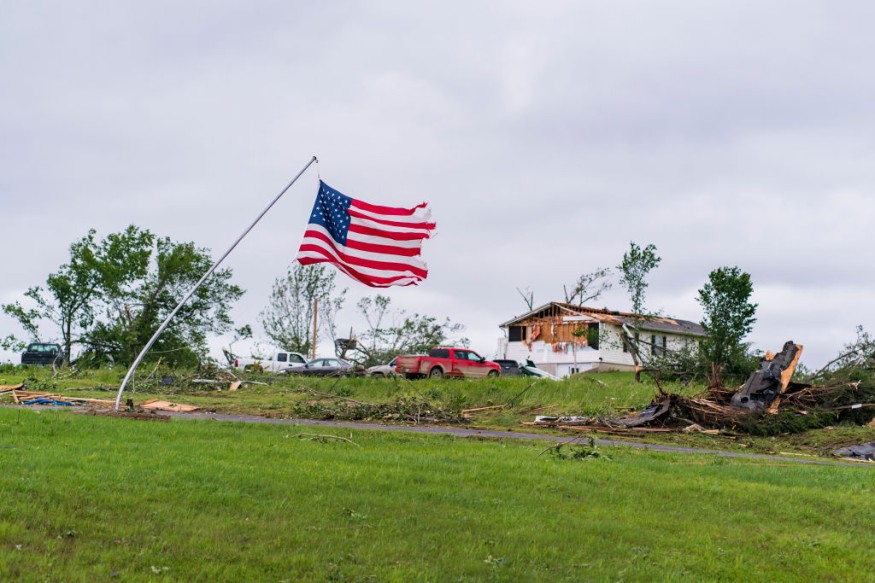Meteorologists are closely watching numerous risks for storm development throughout the south-central United States in the coming days as the third month of the primary severe weather season peak begins.
Incoming Storm

On Friday and Saturday, a powerful storm produced strong-to-severe thunderstorms over the country's center, prompting tornado warnings in at least seven states.
Soon after 8 p.m., a tornado ripped across Sedgwick County, Kansas, and Butler County, Kansas. Friday is central time. On Saturday and Sunday, teams from the Wichita National Weather Service gathered data and evaluated the tornado's likely rating.
Monitoring a Low-Pressure System
Meteorologists monitor a low-pressure system that erupted from the central Rocky Mountains on Sunday evening. From far eastern New Mexico to parts of Missouri and Arkansas, the storm can deliver a multiday danger of severe storms.
The storm danger began to build around the New Mexico-Texas border on Sunday afternoon, moving eastward across the Oklahoma panhandle and into the midnight hours.
On Sunday afternoon, heavy hail was reported in Texas and New Mexico, including a report of baseball-sized hail in Lovington, New Mexico. Hail the size of tennis balls was reportedly seen at Andrews, Texas, which is northeast of Odessa. Later in the day, baseball-sized hail was observed between Coyanosa and Stockton, Texas.
Moving Towards Texas
According to the National Weather Service, the cell that caused significant hail to Stockton subsequently spawned a verified tornado near McCamey, Texas.
"A warm front will rise northward over Texas, with a dryline forming across far eastern New Mexico, allowing Gulf moisture to surge back along the dryline as the front lifts northward," said AccuWeather Meteorologist Joseph Bauer.
When moisture from the Gulf of Mexico collides with a sliver of energy coming from the West, it will ignite the formation of thunderstorms.
Storms exploded late Sunday night, bringing hail, destructive wind gusts, and many reports of tornadoes touching down.
"Regions from eastern New Mexico to western Texas are now experiencing extreme dryness so that any rain will be welcome; but, some of that rain might be rather heavy," Bauer explained.
As storms move eastward on Monday, certain cities touched by intense storms on Friday and Saturday will be in the hot zone for severe storm formation.
According to Bauer, "rain and storms will be persistent throughout the morning across the I-35 corridor from Wichita to Oklahoma City," and "this activity is predicted to extend eastward later in the morning, allowing the atmosphere to destabilize moving into the afternoon."
Extreme Weather
Another disruptive evening might occur on Monday from southern Kansas to central Oklahoma, depending on how quickly the rain clears throughout the early morning. According to Bauer, places like Wichita, Kansas, Oklahoma City, and Tulsa, Oklahoma, are in danger of further downpours, transport disruptions, hail, and even the potential of tornadoes.
The low pressure region that might generate storms over the southern Plains on Sunday and Monday is projected to travel farther east into the Ohio Valley by Tuesday, bringing the potential of more severe weather.
Storms could become severe Tuesday afternoon as they travel from Arkansas to Ohio, bringing the potential of downpours, hail, and destructive wind gusts.
Meanwhile, additional rain and severe weather are expected across the Plains by midweek.
"Another storm moving into the interior West on Wednesday might bring the possibility of severe thunderstorms back into the forecast for the region," Bauer said.
Possibility of Hail
Thunderstorms will be able to produce hail, severe winds, and tornadoes once more. More downpours are expected to hit the area, perhaps helping alleviate the region's drought.
For more climate and weather updates, don't forget to follow Nature World News!
© 2026 NatureWorldNews.com All rights reserved. Do not reproduce without permission.





